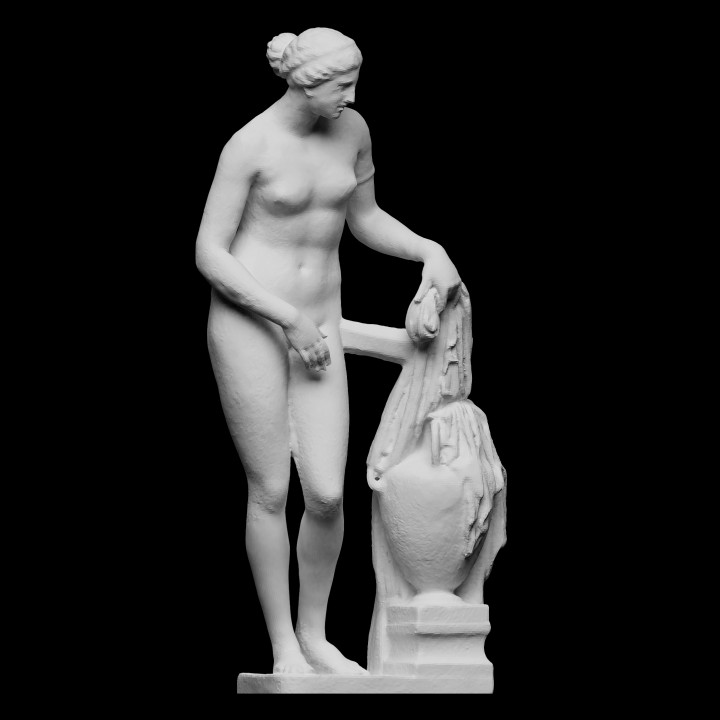
Colonna Venus (Aphrodite of Knidos)
myminifactory
Colonna Venus (Aphrodite of Knidos) The Colonna Venus is an exceptional Roman Imperial Period replica of the renowned Aphrodite of Knidos sculpted by Praxiteles, a masterful Attic artist. Although the statue stands as a high-quality copy, most scholars consider it dry and lacking in vitality compared to the original masterpiece. It remains remarkably well-preserved despite many other copies being lost to time. The Colonna Venus was originally part of the private collection of the esteemed Colonna family. The statue first appeared at the Vatican in 1783, one of four Venus statues gifted by Filippo Guiseppe Colonna to Pope Pius VI. It soon became a prized addition to the Museo Pio-Clementino. When the museum opened its doors to the public, the statue was altered with a metal drapery to conceal its perceived erotic appeal. Scholars, artists, and others mocked the "faux modesty" drape, which was eventually removed in 1932. Another model displayed at Scan the World shows the statue as it once was, adorned with the modesty drape: https://www.myminifactory.com/object/3d-print-aphrodite-34123 The original Aphrodite of Knidos was crafted around the mid-to-late 300s B.C.E. and stood proudly in the city of Knidos. As a cult statue, it drew tourists and helped make Knidos famous. The statue gained fame not only for being one of the first larger-than-life female nudes but also for depicting Aphrodite completely nude. Praxiteles' masterpiece was meant to convey a complex message rather than being overtly erotic. Aphrodite was shown as she entered or exited her bath, instinctively reacting to a voyeur by holding her discarded drapery in her left hand while shielding her genitals with her right hand. This pose conveyed a deeper meaning: Aphrodite looked towards her left, using her drapery and hydria as a visual barrier. The hydria also referenced her marine birth, drawing attention to the source of her powers of fertility, sex, and love. Her right hand shielded her genitals while also highlighting the source of her divine authority. No mortal could gaze upon a god or goddess without being consumed by flames, but Aphrodite made herself safe for view, and shielding her genitals was part of that action. The statue and Praxiteles became the subject of titillating stories likely apocryphal. One story claimed that Aphrodite heard about the statue and came to see it herself, exclaiming "Where did Praxiteles see me naked?" Another tale stated that Praxiteles created a clothed and nude Aphrodite for the people of Kos, who rejected the nude version. The city of Knidos purchased the statue, and another story related how a love-struck young man hid in the temple one night, attempting to have sex with it. The statue was later removed to Constantinople, where it was displayed in the Palace of Lausus as part of a grand collection of famous pagan and cult sculptures. Unfortunately, the statue was likely destroyed during a massive fire that ravaged much of Constantinople around 475 C.E.
With this file you will be able to print Colonna Venus (Aphrodite of Knidos) with your 3D printer. Click on the button and save the file on your computer to work, edit or customize your design. You can also find more 3D designs for printers on Colonna Venus (Aphrodite of Knidos).
